Another Angolan fishery assessment
Continuing my glimpse into where and how I will be conducting my research in Angola, I will introduce you to the second artisanal fishery site I visited, Buraco, 70 km south from the city of Luanda.
Buraco is a coastal fishermen village with about 80 people who depend directly and indirectly on fisheries. This site has some infrastructure to support local artisanal fisheries, including a small and fish treatment area (women were observed cleaning and separating fish), as well as traditional fish drying stalls.
Fish drying techniques, using salt, are a frequent practice in Angola due to the lack of ice on artisanal boats and the need to preserve sharks.
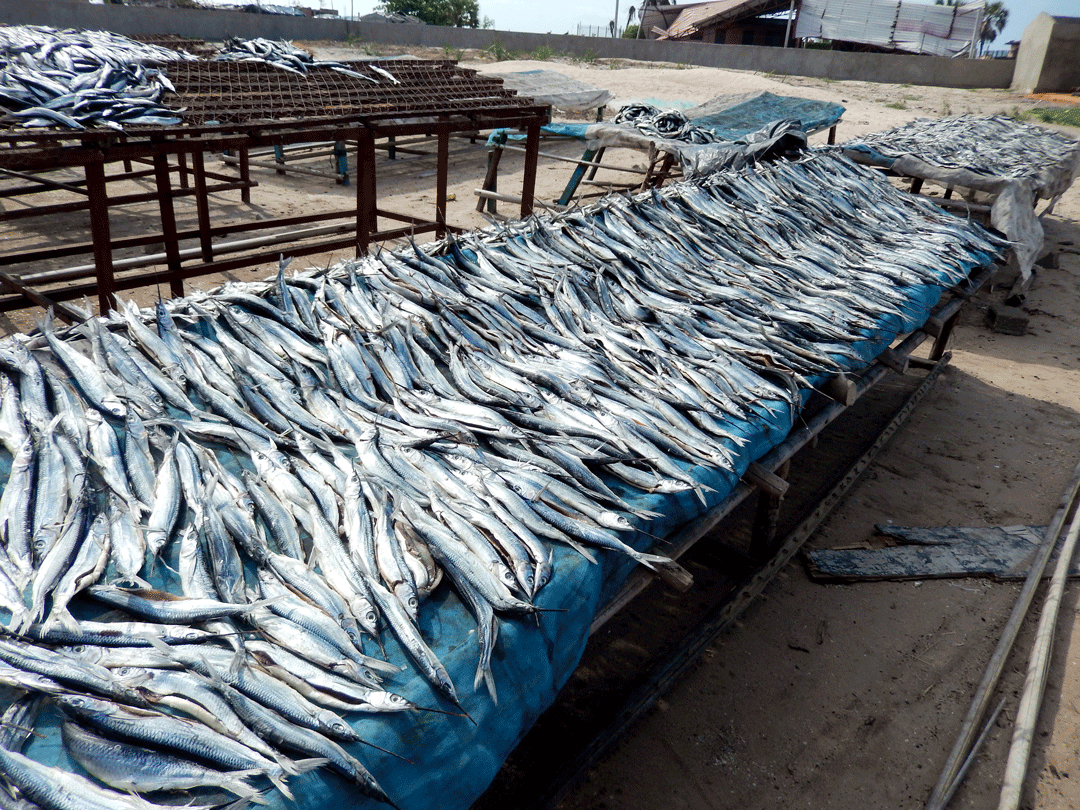
Fish drying stalls are one of the techniques utilized for preservation of the products. Photo © Ana Lucia Furtado Soares
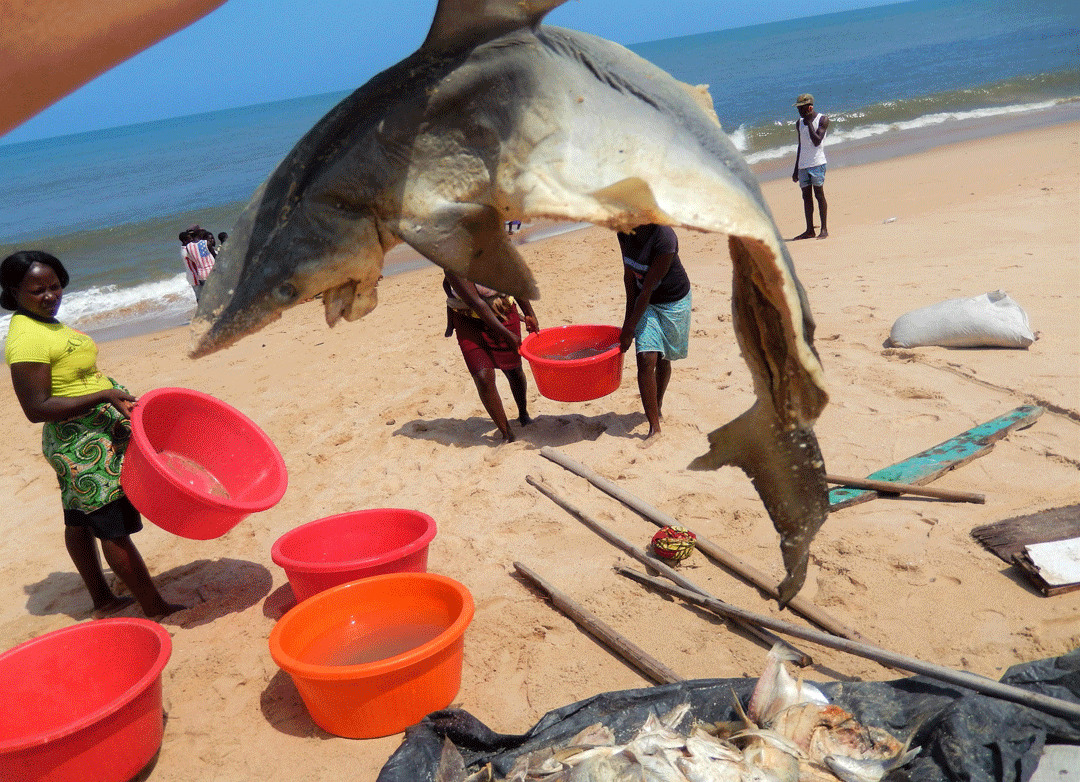
Juvenile shark, under salt drying technique for meat preservation, photographed after 4 days at sea. Photo © Ana Lucia Furtado Soares
Fishermen were observed using chatas (small-planked boats measuring 5–9 m in with a flat bottom and an outboard engine) with potent motors and fishing nets of various mesh sizes, fishing both in demersal coastal waters and pelagic waters. This is a multi-species fishery and small demersal sharks and rays were landed using mainly bottom set gillnets. Large sharks were usually targeted using surface longlines.

Fishermen removing a chata boat type from the water while women collect the fish to initiate the transformation process. Photo © Ana Lucia Furtado Soares
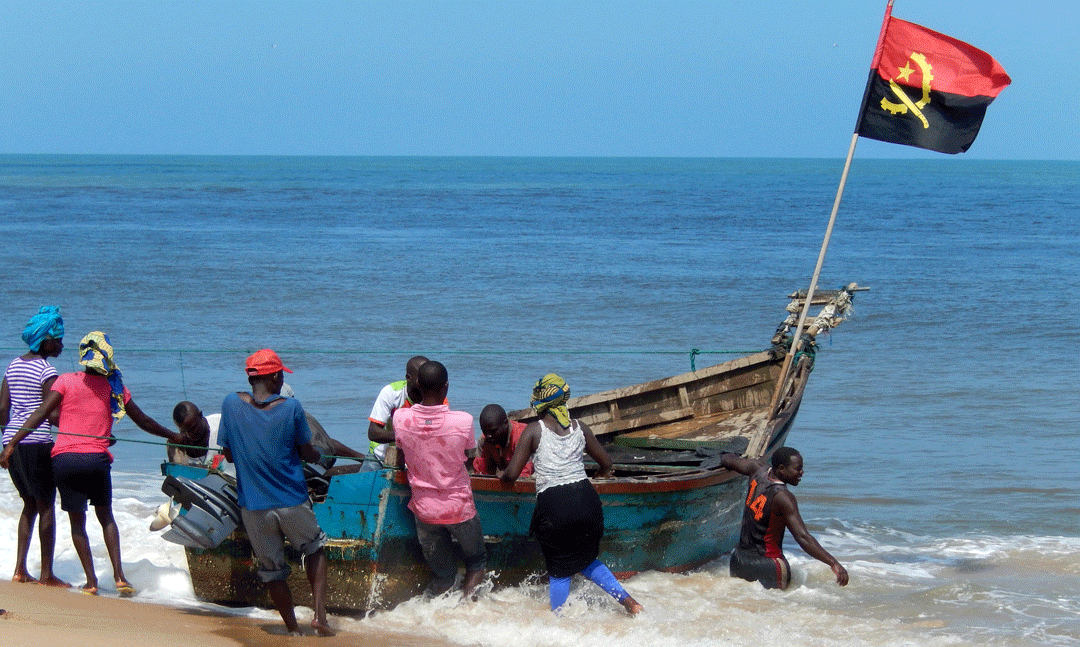
Photo © Ana Lucia Furtado Soares
Elasmobranchs are usually caught in nets with varying mesh sizes and then marketed or used for direct consumption at the village.
In addition to using different gears, two types of fisheries were observed in this area, one that lasts up to 10 days at sea and a daily one, which occurs during the evening and early morning.
Fish landings at Buraco consist of fresh products, if fished during the day, and will be both dry and fresh if the boat stays longer than one day at sea.
For longer fishing trips, fishermen bring salt with them and dry the fish to preserve it. These fish, already processed at sea, are ready to be sold when landed.
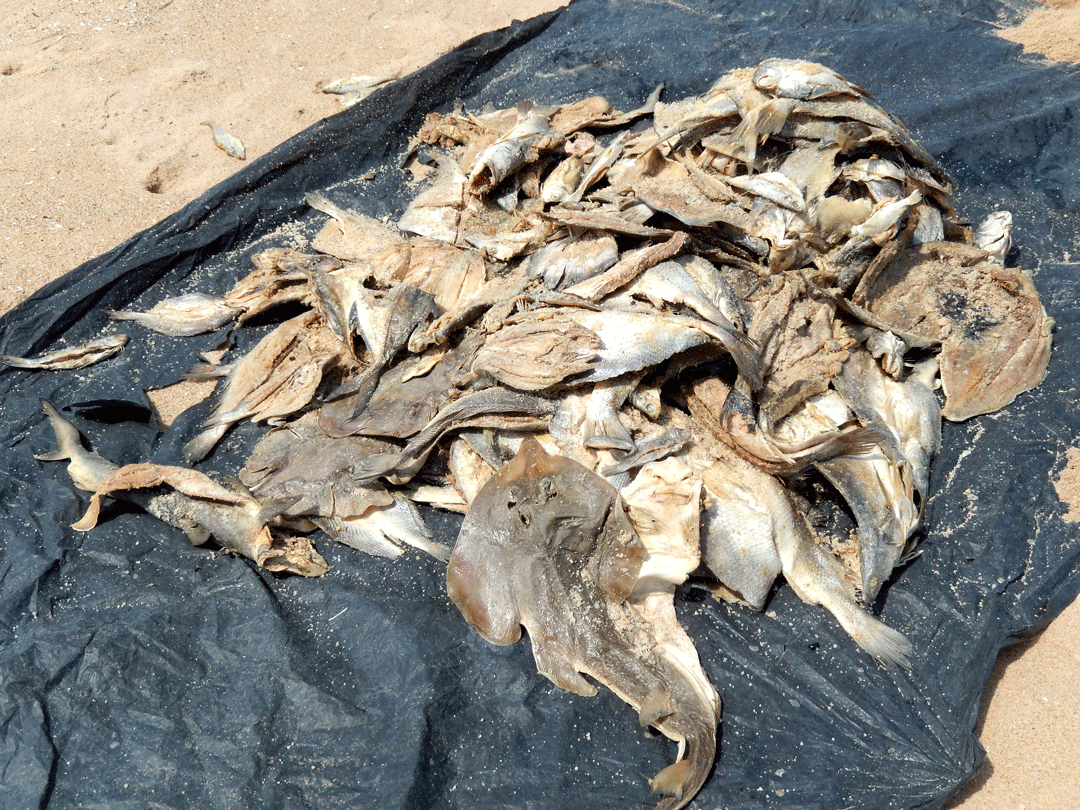
Dry Elasmobranch products including rays, guitarfishes and sharks for sale. Photo © Ana Lucia Furtado Soares

Photo © Ana Lucia Furtado Soares
Fresh fish is directly sold during the day to specific companies and to the public. During samplings, juvenile sharks, rays, and guitarfishes were recorded.
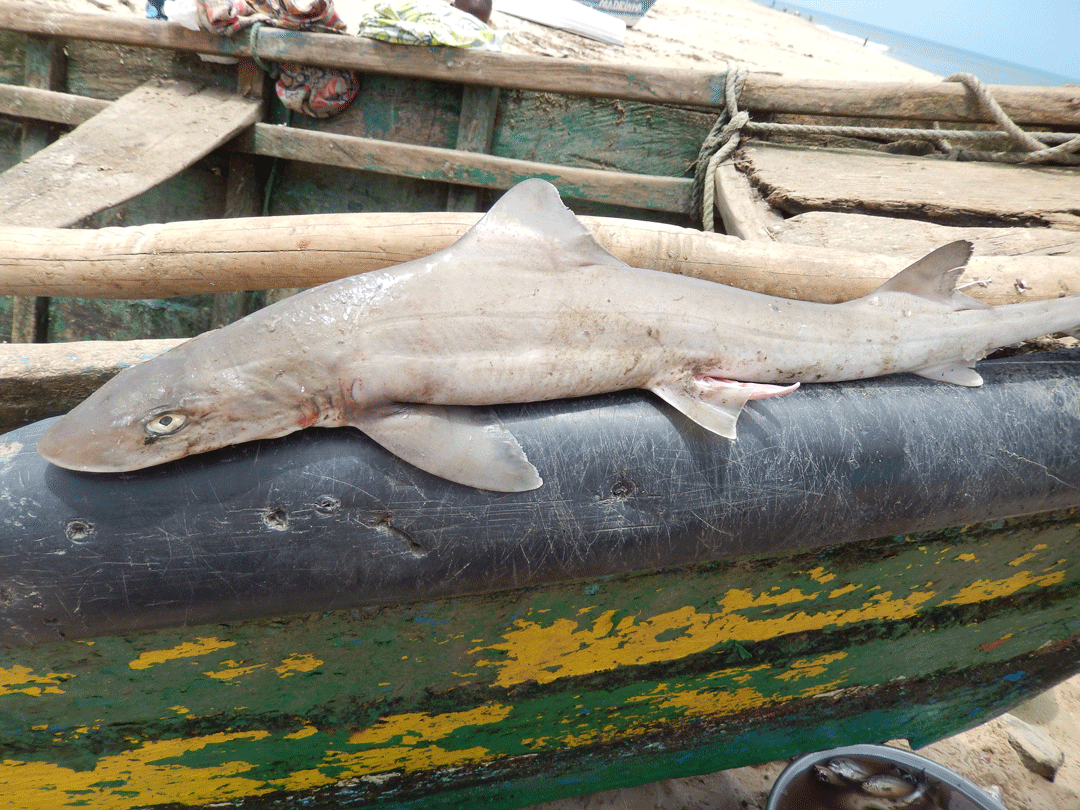
Fresh smoothhound sharks photographed on a chata boat type. Photo © Ana Lucia Furtado Soares
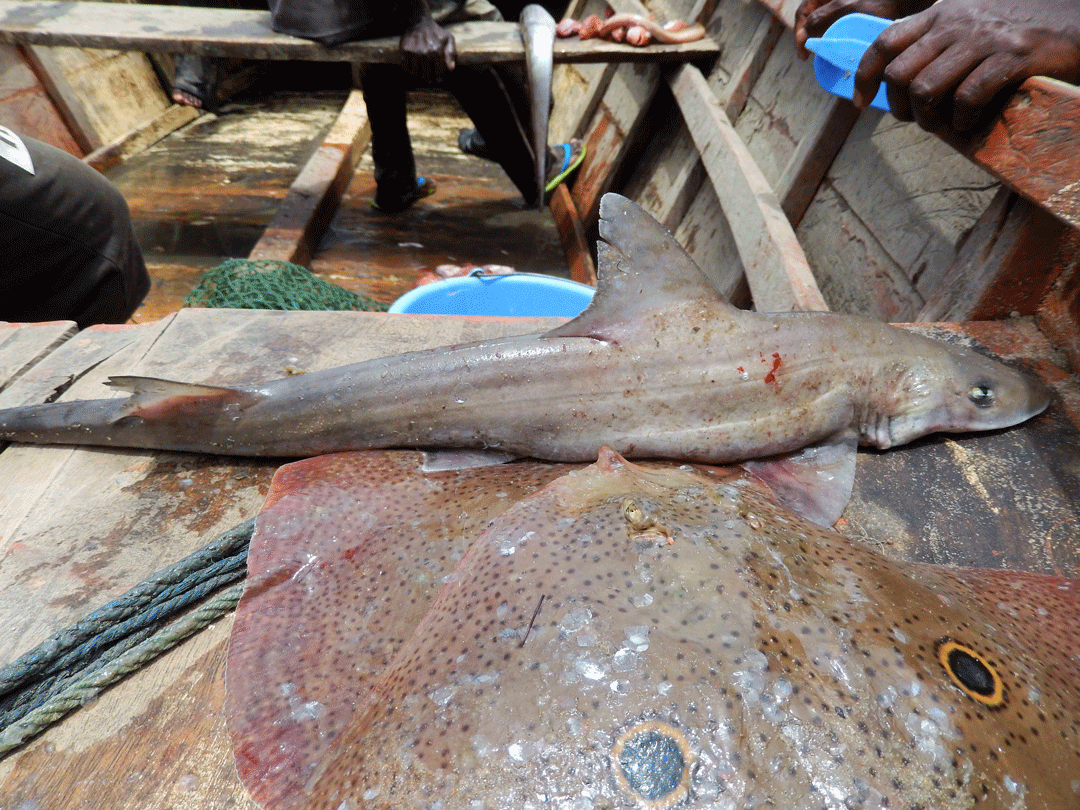
Fresh smoothhound sharks and a twin-eye skate photographed on a chata boat type. Photo © Ana Lucia Furtado Soares
